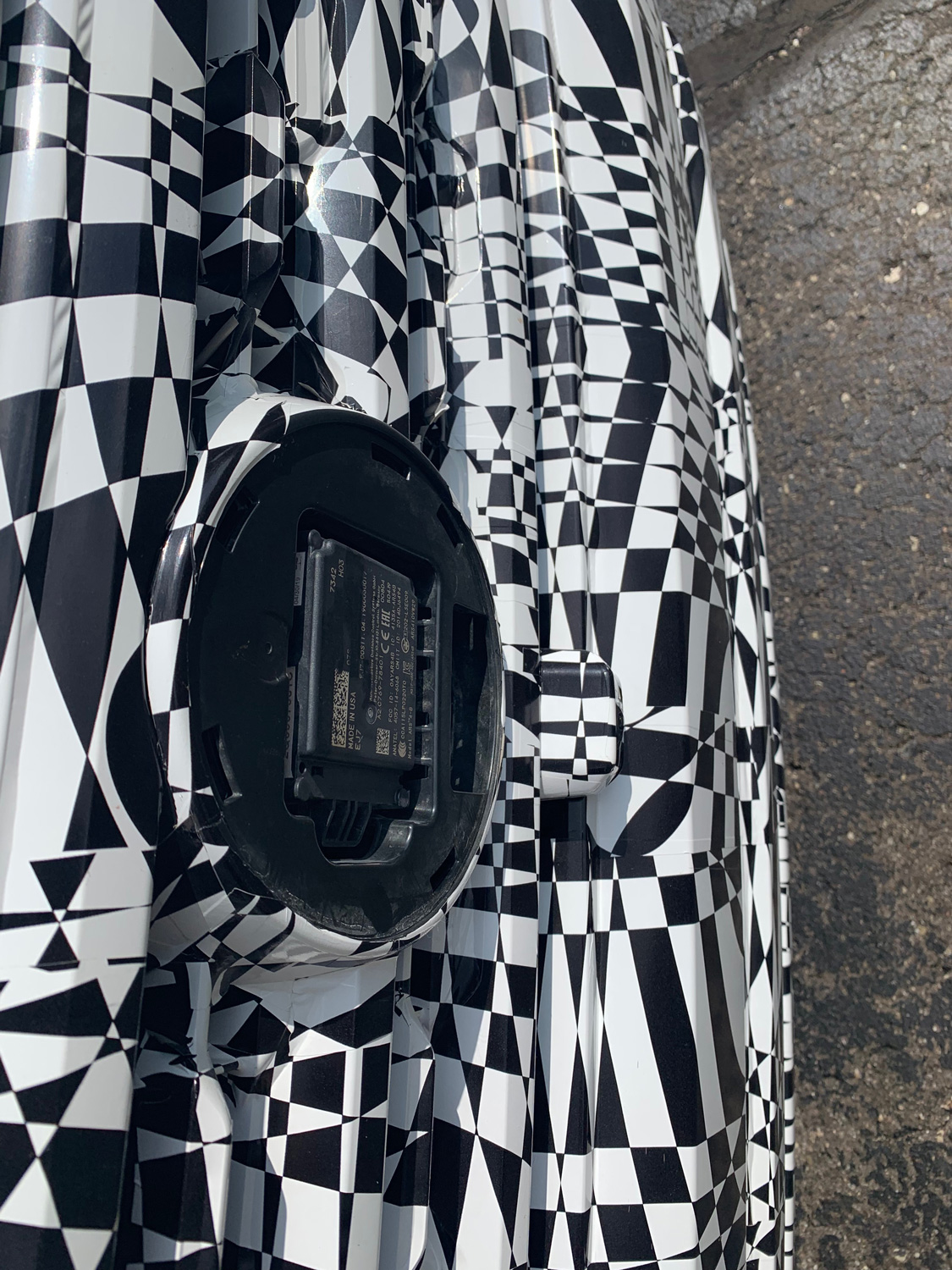You’ll never feel alone in a 2020 VW Atlas Cross Sport
Compared to the current Atlas, the 2020 Atlas Cross Sport rakes the back hatch, loses the third row, and slathers on the digital connectivity.
The mildly confusing nomenclature is reminiscent of the 2018 Audi A4 and its Allroad wagon variant; siblings in the same model line that each caters to its own audience. The Allroad is about taking the city-slick A4 sedan to romp around the woodlands instead, or at least that’s the premise for the more outdoorsy lifestyle within which it supposedly nestles. The Atlas Cross Sport, not yet revealed fully but due for debut on October 11, offers a tech-intensive alternative to the three-row Atlas for those who need cargo space… but, you know, not that much.
VW wants to “have the car engage with the customer, versus the customer requesting an engagement from the car,” said Frank Weith, Volkswagen Group of America’s General Manager for Connected Services. The goal is for each VW to “integrate into the digital lifestyle” of each customer. The 2020 Cross Sport boasts the second generation of Car-Net, VW’s platform for automotive digital connectivity that bridges the ever-shrinking gap between a customer’s vehicle and phone.
Volkswagen wants customers to view their car as a device, up to and including adding their Cross Sport or other VW to their internet plan. The 2020 Cross Sport will be equipped with 4G WiFi, allowing occupants to stream videos and not just music. Right now, Verizon and T-Mobile customers are shoo-ins, but VW says that other internet partners are on the way. To get in-car WiFi, VW customers simply plug in a cell phone number already on their existing data plan and provide their zip code.
The app is integrated with Parkopedia, a parking service aggregator that scopes out parking structures and some on-street lots and feathers directions into the car’s existing navigation system.

“We’re also looking at other ecosystems,” Weith continued. “For instance, peer-to-peer systems for car sharing.” However, before such a car-sharing system could be implemented, VW would need to sign on a third party provider; as they’ve signed on Verizon for the internet connectivity. A third-party aggregator will also allow customers of the 2020 VW range to shop around for insurance, though Weith was clear that this is entirely an opt-in service.
Another ecosystem with partners in the works: package delivery. There is officially no comment on whether Amazon will be involved, but that’s the obvious potential pairing here. The remote app allows VW owners to remotely lock and unlock their vehicle as well as open particular doors. On the off chance you walk away with your windows down and an afternoon shower rolls in, the Cross Sport will send you an alert (provided you’ve toggled the push notification setting) to roll up your windows.
In the app, you can see estimated fuel levels, receive maintenance warnings, and book service through the app—at your preferred VW dealer, of course. If, and only if, drivers choose to, their vehicle will gather tracking data, accumulate a score, and submit it to insurance providers to receive discounts.
VW was most proud to feature the nuances of the 2020 Cross Sport’s adaptive cruise control. Lane assist comes on both existing and future Atlas models, but the Atlas of today does not feature lane-centering; the Atlas Cross Sport of 2020 will, at up to 37 mph, thanks to the front camera and front radar sensor.

On the pre-production Cross Sport we drove, the front camera sticks its snout out between the louvers of the front grille, tucked below the exposed radar sensor on the stealthy pre-production models we drove. In production models the VW badge will hide all the sensor gadgetry aside from the belly-button-style camera eye.
The Cross Sport’s stop-and-go Traffic Jam Assist adaptive cruise control was surprisingly non-intrusive—if you could keep your feet from twitching on the pedals as the lead car’s brake lights flashed, the Cross Sport slowed, maintaining a comfortable distance. It also stopped naturally when the lead car stopped, then picking up speed at a smooth pace when things got moving again.
Trust issues aside, the two large screens in the cabin, with their highly customizable displays of speed and navigation features, were pleasingly simple. Logically placed buttons on the steering wheel allow you to drive with your thumbs alone, though if you remove your hands from the wheel, the Cross Sport makes sure to chastise you with a variety of audible and visual alerts.
Clearly, commuting and family-hauling crossovers cater to a different breed of connectivity than some drivers desire. The Cross Sport’s tech aims to remove stress from commuting, and as an antidote in that regard it will likely succeed. If you enjoy the digital integration of your daily driver and stuff-hauler and don’t mind handing some of driving’s tedium to, well, your car’s computers, the Cross Sport can handle it. You’ll definitely build some trust with your car.











